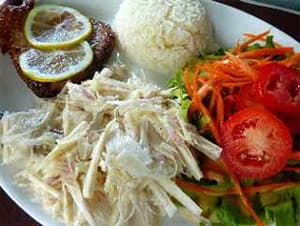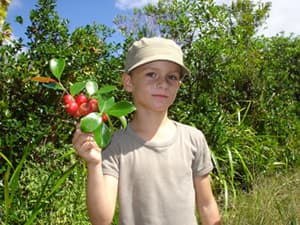Restaurants in La Plaines des Cafres / Palmistes

As you drive along the RN3, the road which crosses the island from southwest to the east, commonly called "the road of the plains," between the cirques and the volcano, you will discover the region of les Plaines (Plaine des Cafres and Plaine des Palmistes), with different landscapes reminiscent of alpine pastures (culminating at 5300 feet at the Col de Bellevue), other climates and vegetation: heaths with brooms and arum lilies in la Plaine des Cafres, tree ferns and hydrangeas along the road laces which takes you down to la Plaine des Palmistes ... often in the clouds.

Princess Palm and Goyaviers

This village takes its name from the Princess Palm, a palm tree endemic to the Mascarene Islands, which has abounded in this region since the eighteenth century. Prized by gourmets for the delicate taste of the heart of its terminal bud, called chou-palmiste (palm cabbage), the Princess Palm has unfortunately been widely poached and still is in what is now the Heart of the inhabited National Park of Reunion. However, the growing has been developed and the selling of chou-palmiste is regulated in response to consumer demand, so you can eat it in some restaurants in the form of salad (finely grated), gratins, or as a garnish in chicken or pork curries (cari poulé or porc). Its crunchy texture, its delicate flavor make it a very fine product that can be used in the most sought-after preparations.

Goyaviers
In Reunion Island, goyaviers (called « strawberry guavas » in Hawaï) refer to a red spherical berry of approximately 2.5 cm in diameter, with a smooth, shiny and bright red skin. Its creamy-white pulp has a melting and juicy texture but contains hard seeds. It is an invasive species that nevertheless delights children and adults alike who may pick them on the roadside of the plains in the month of May, as well as chefs who prepare them in the form of desserts (mousses, crumbles, coulis ...), jams, jellies, sorbets or juice.




